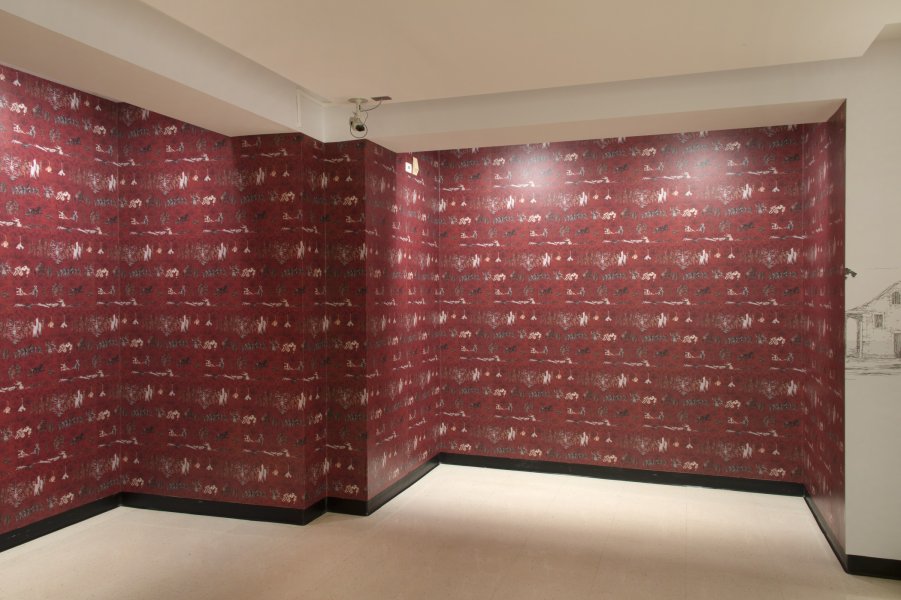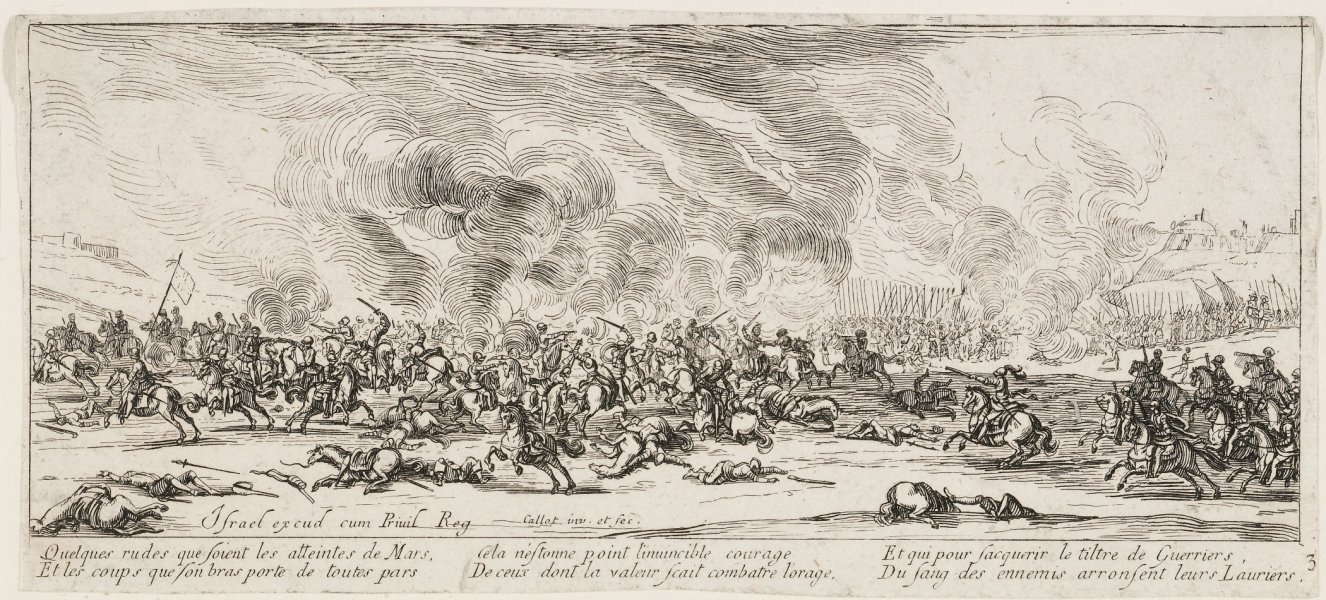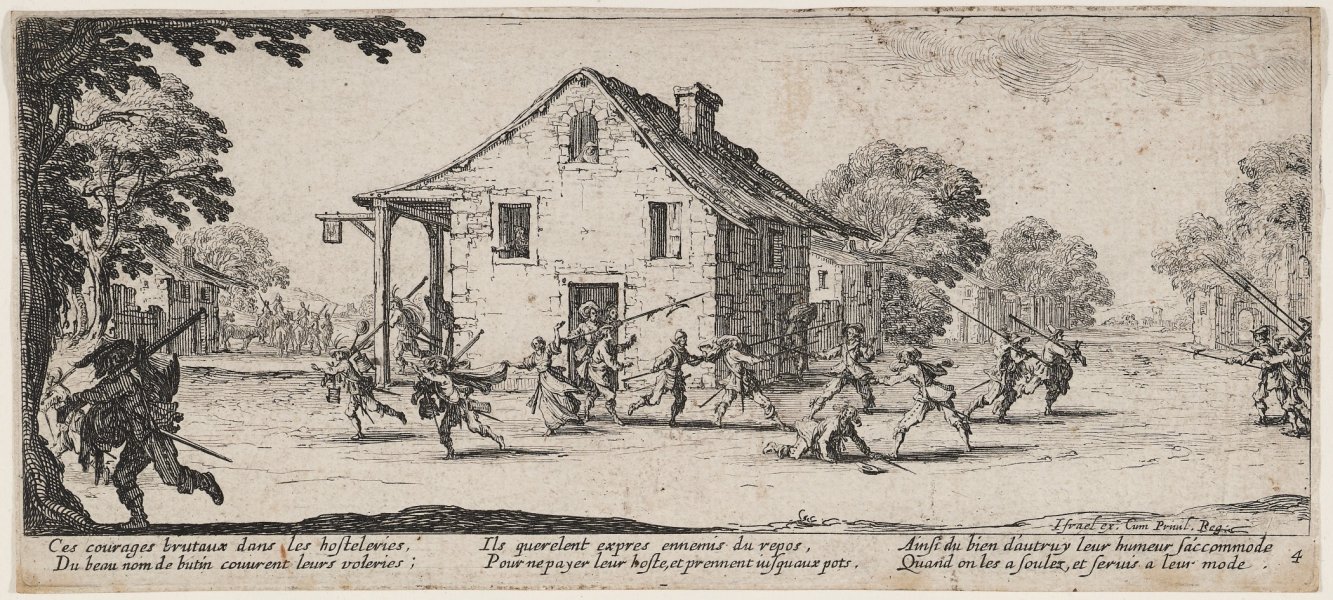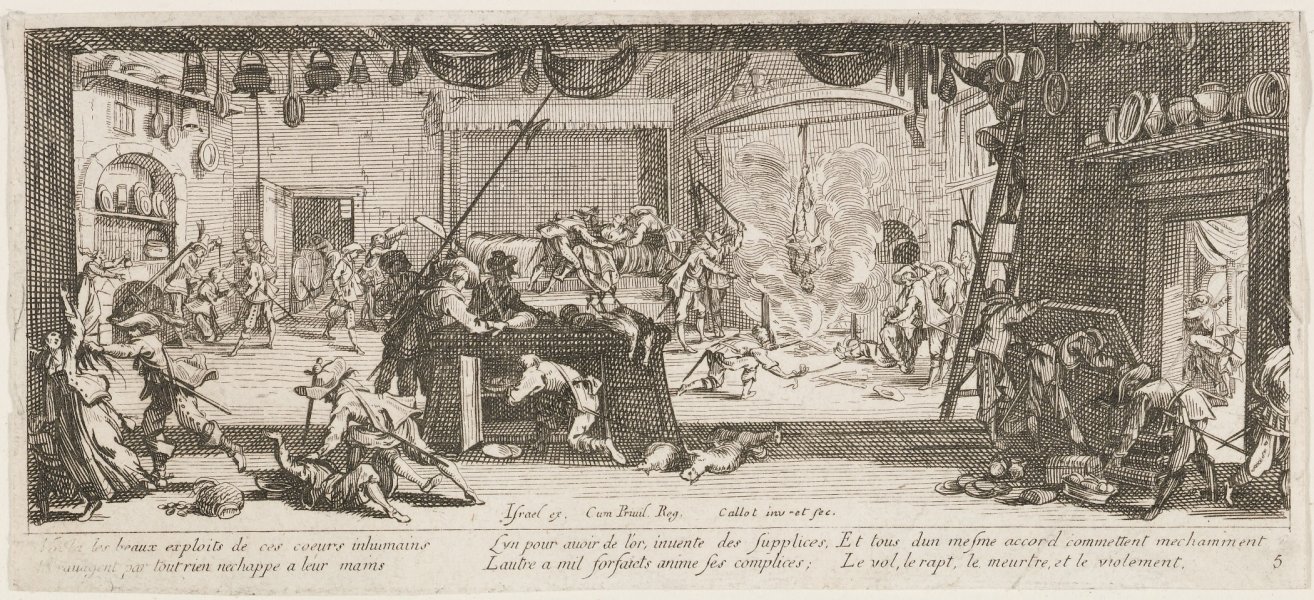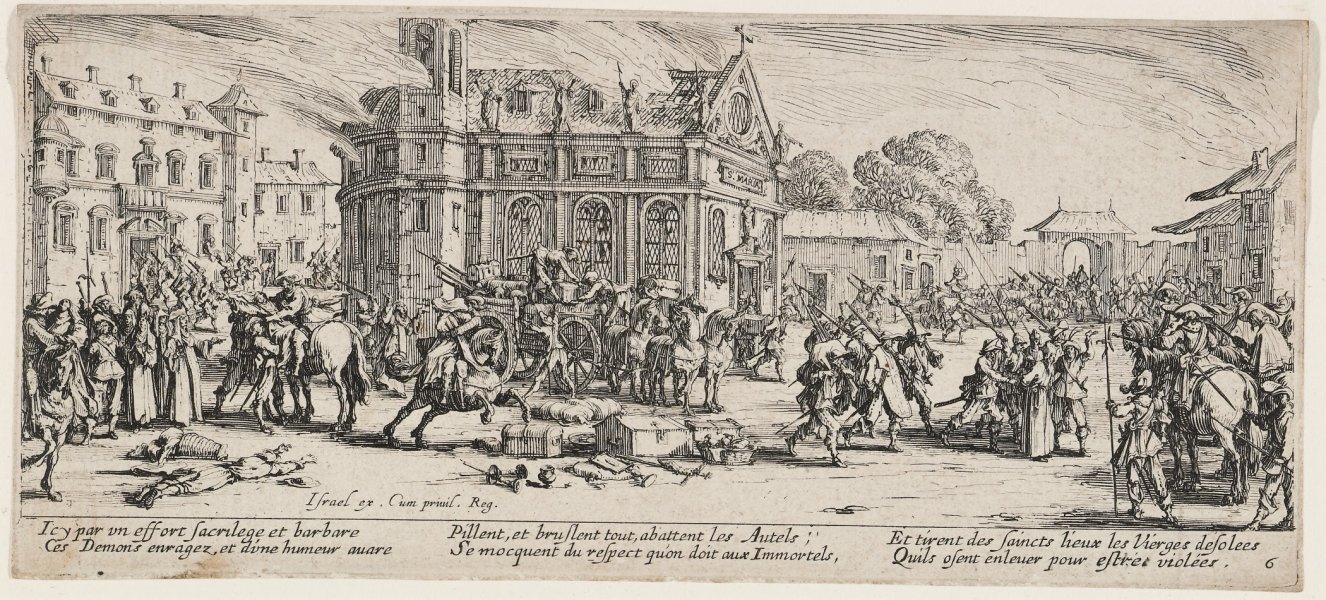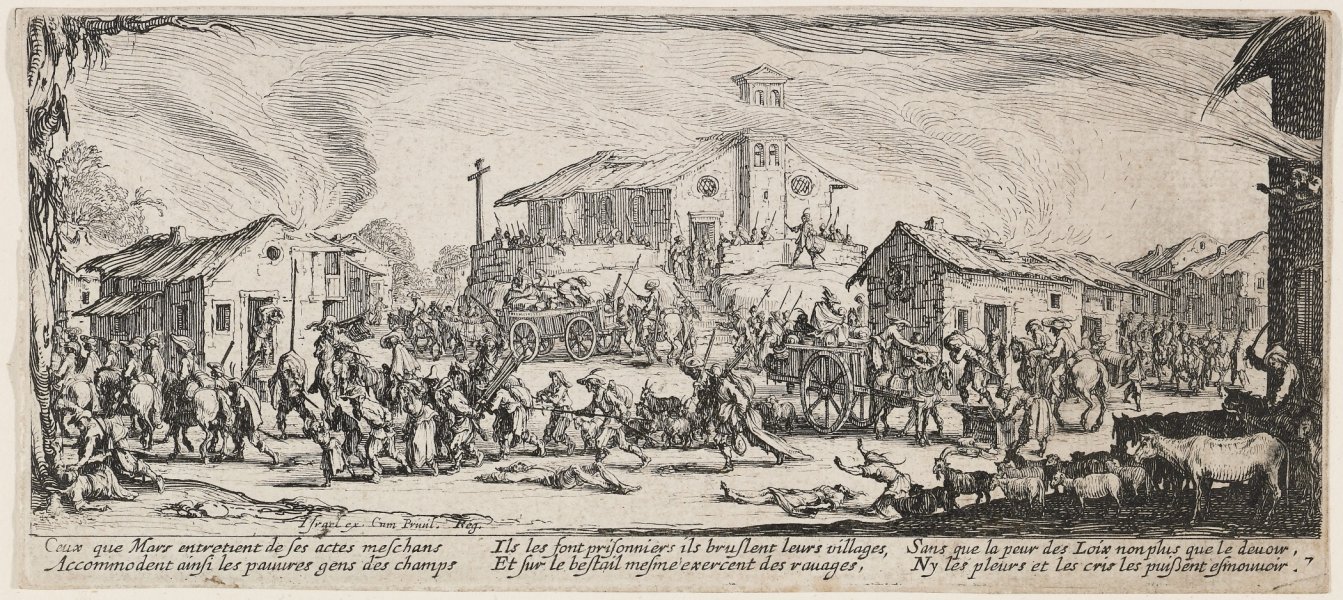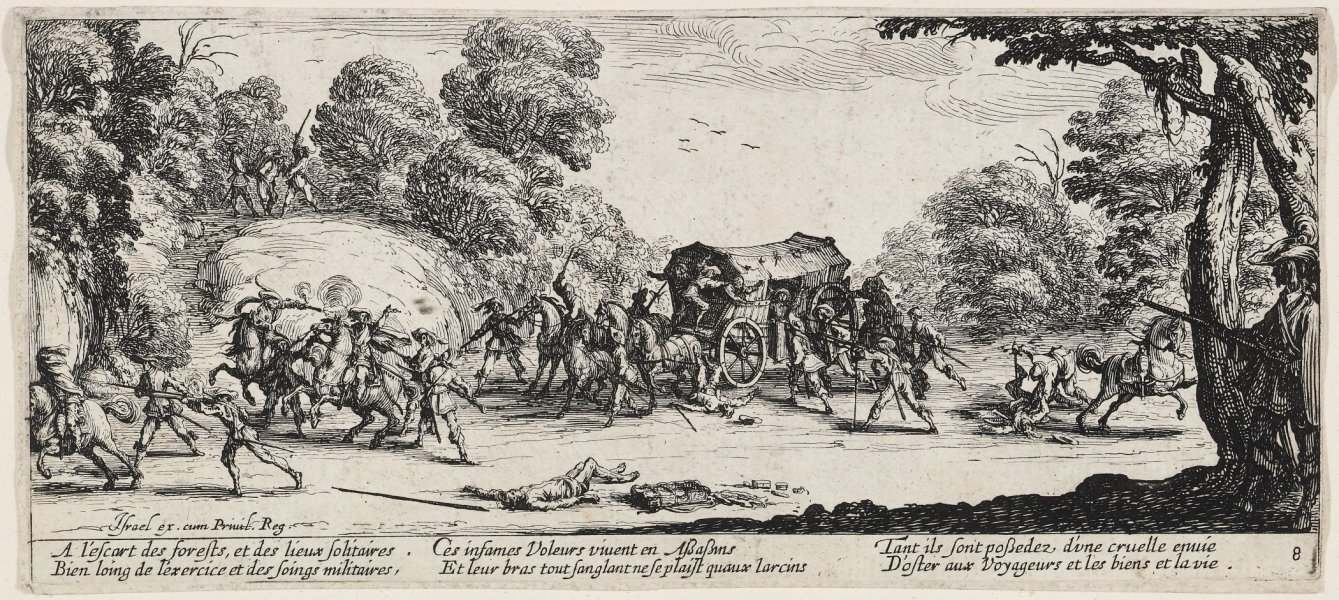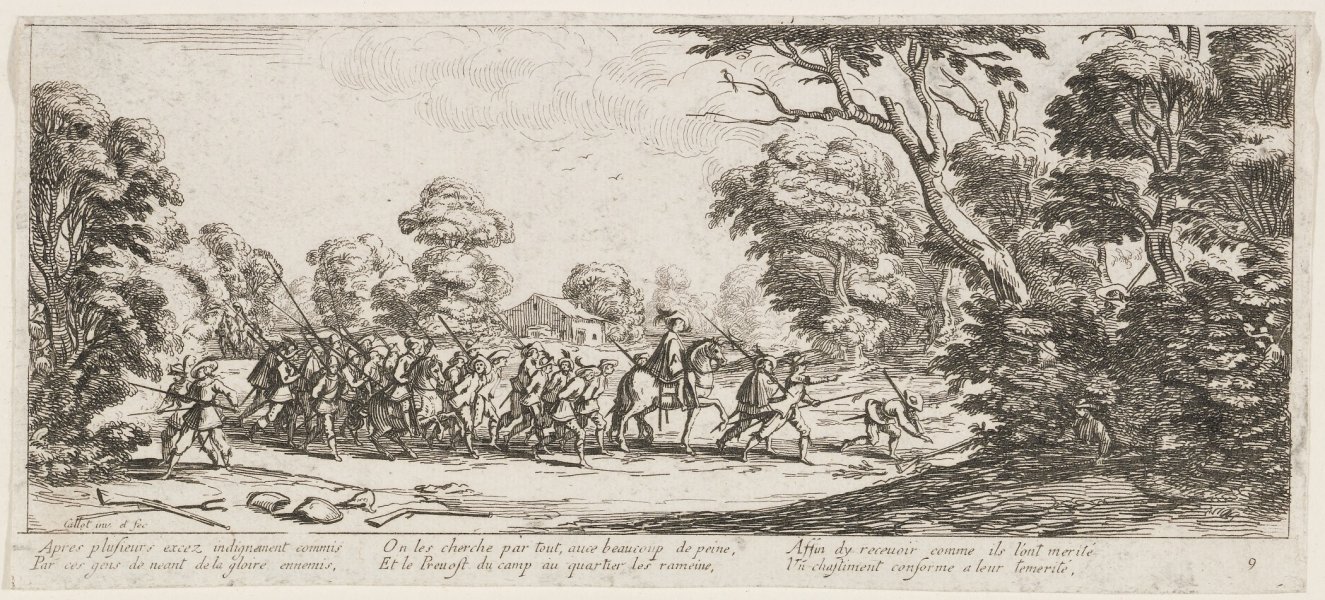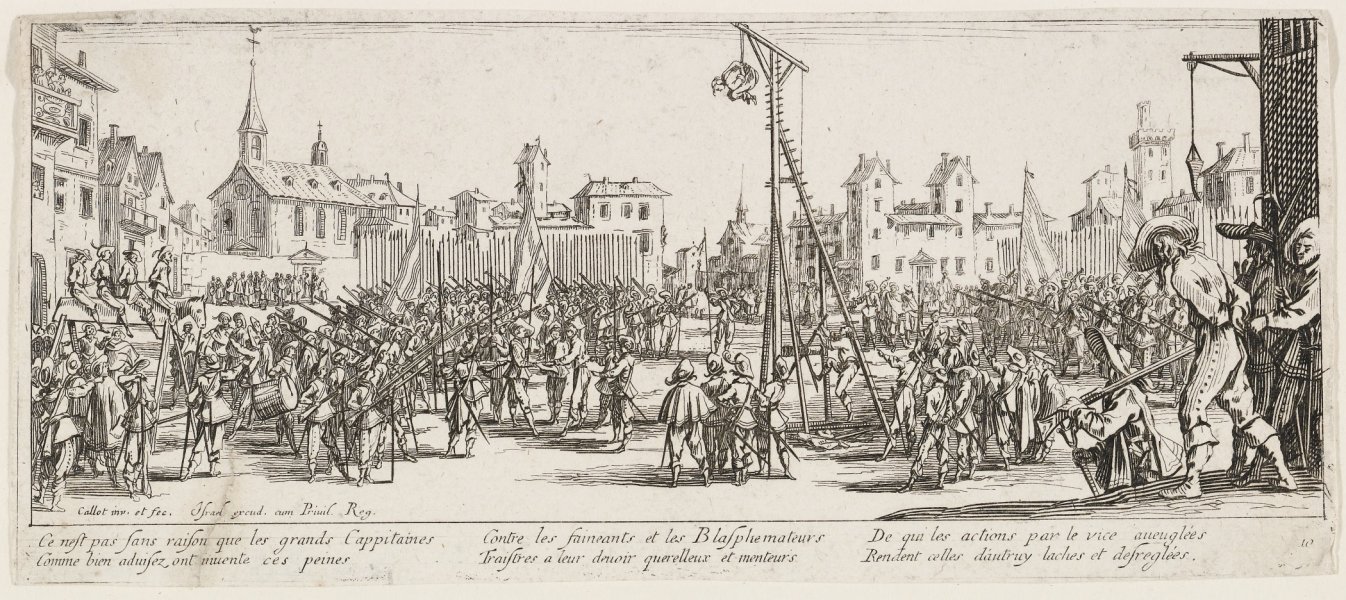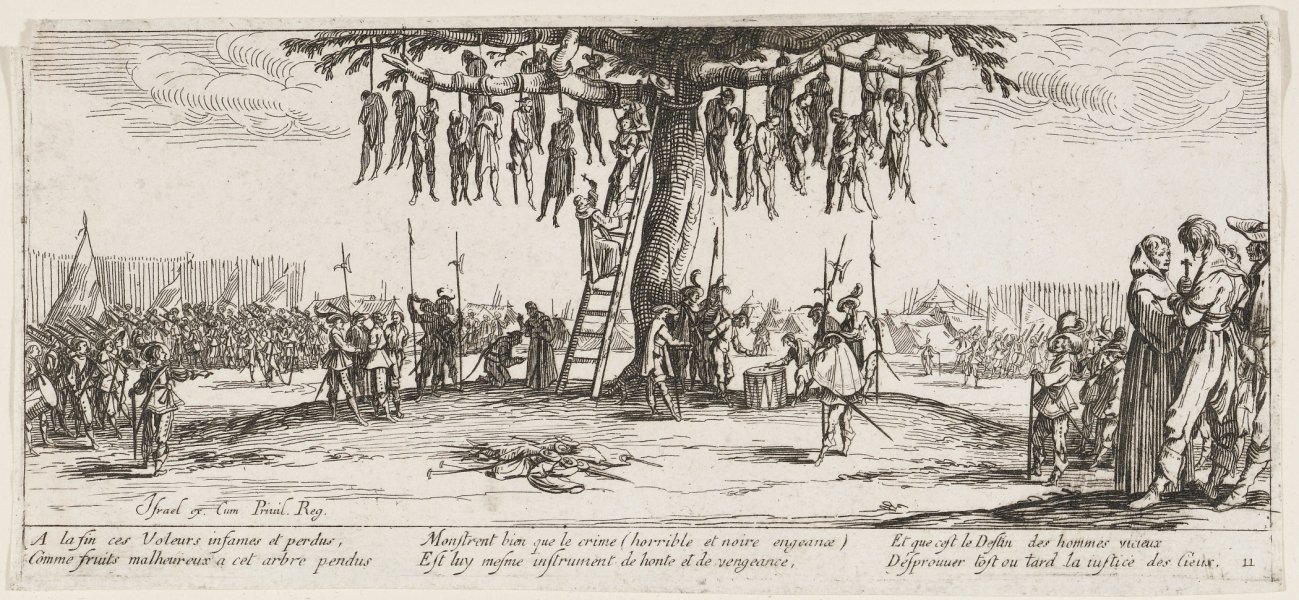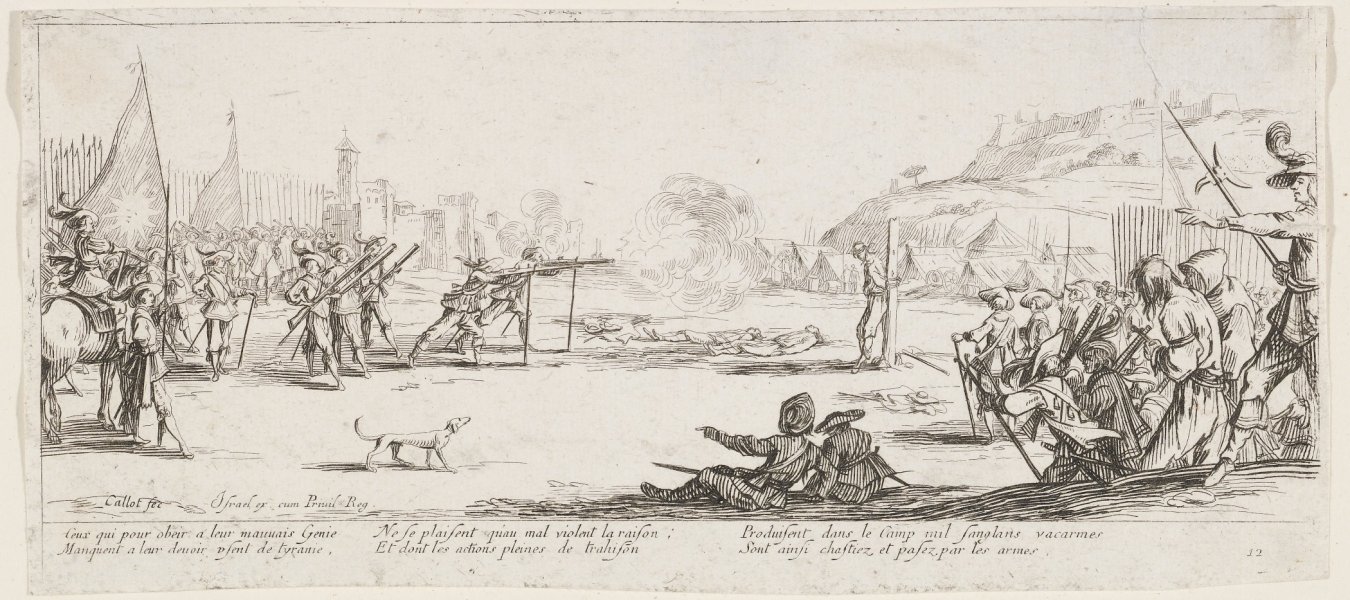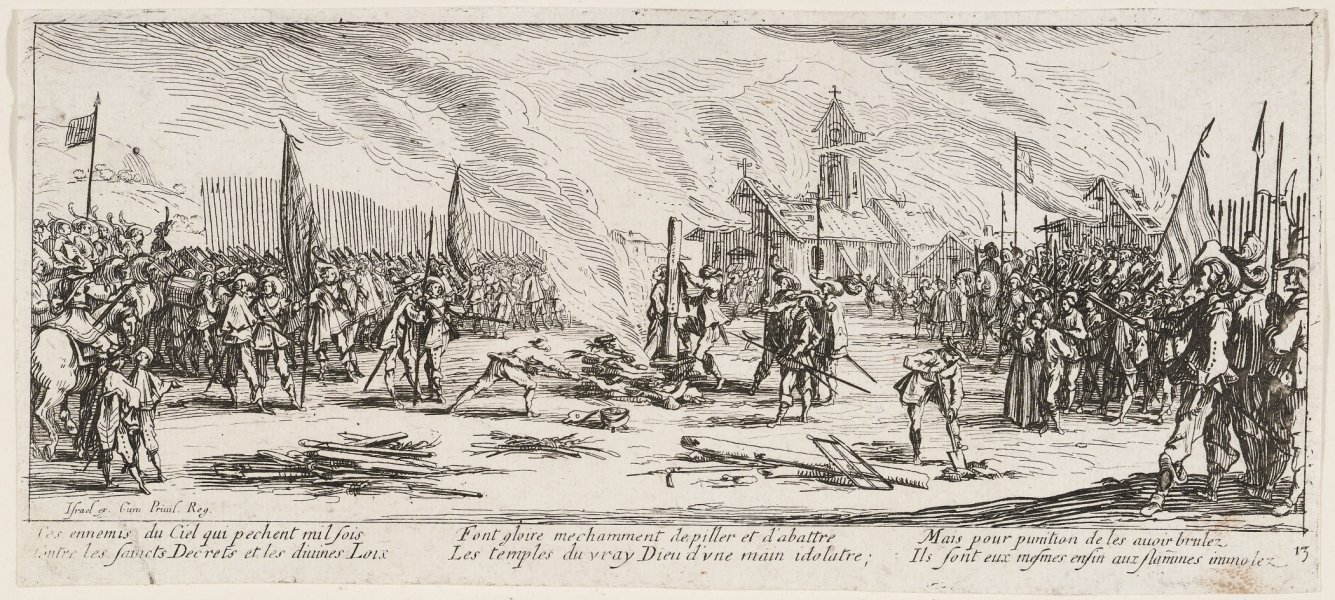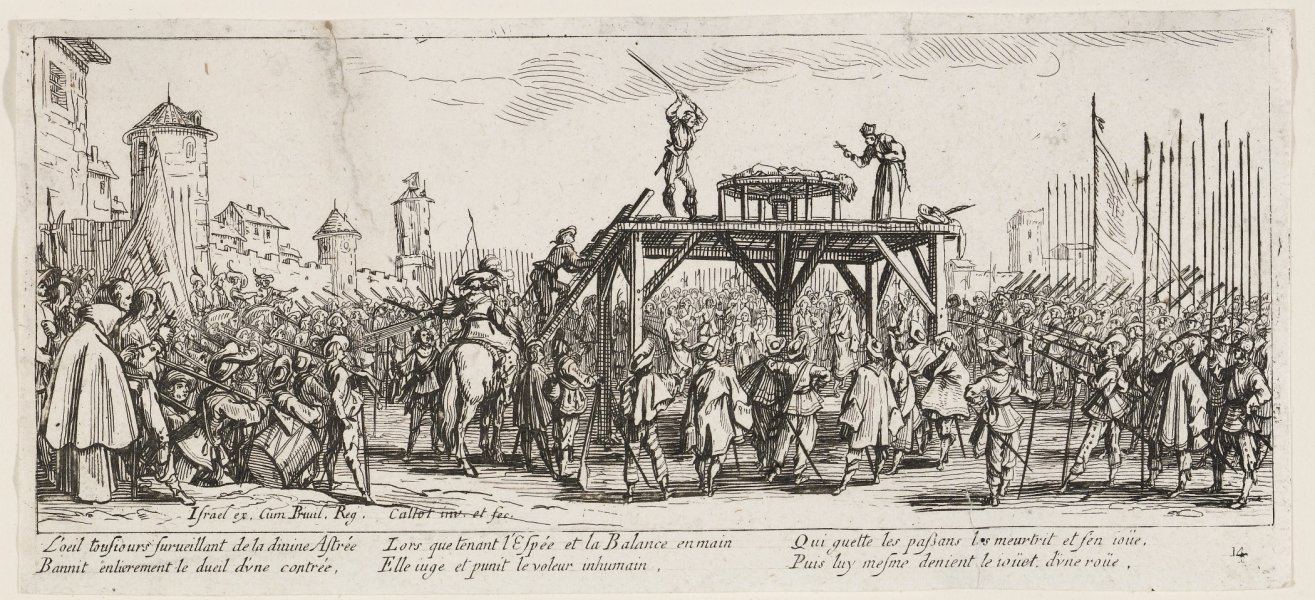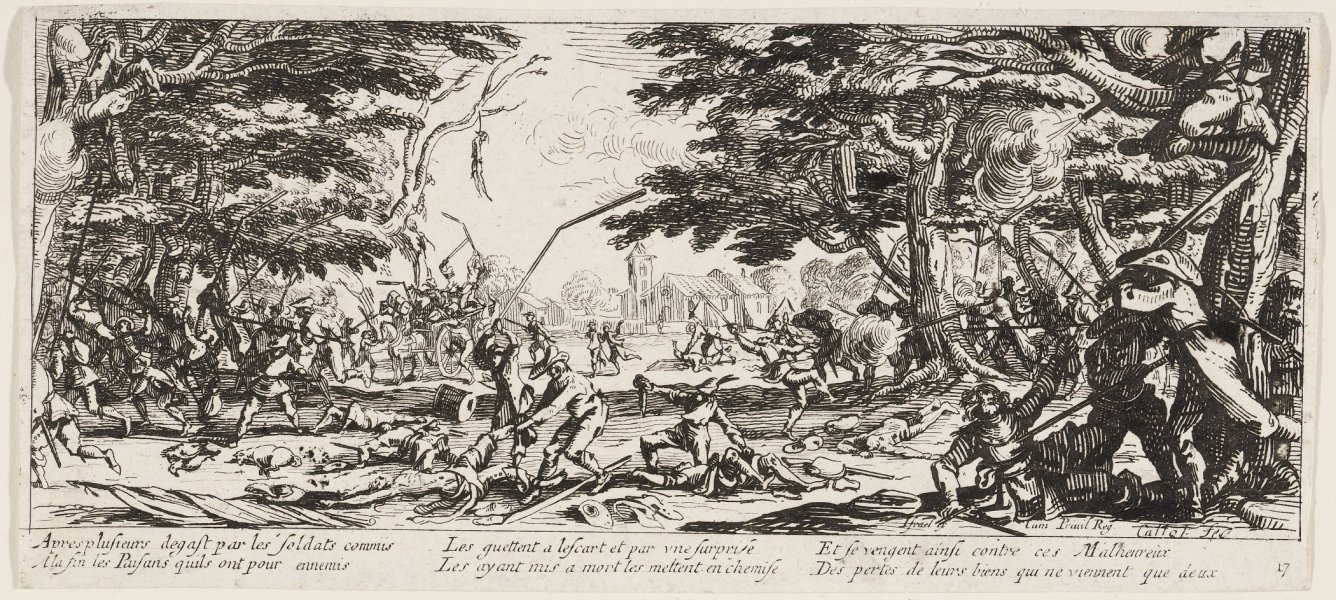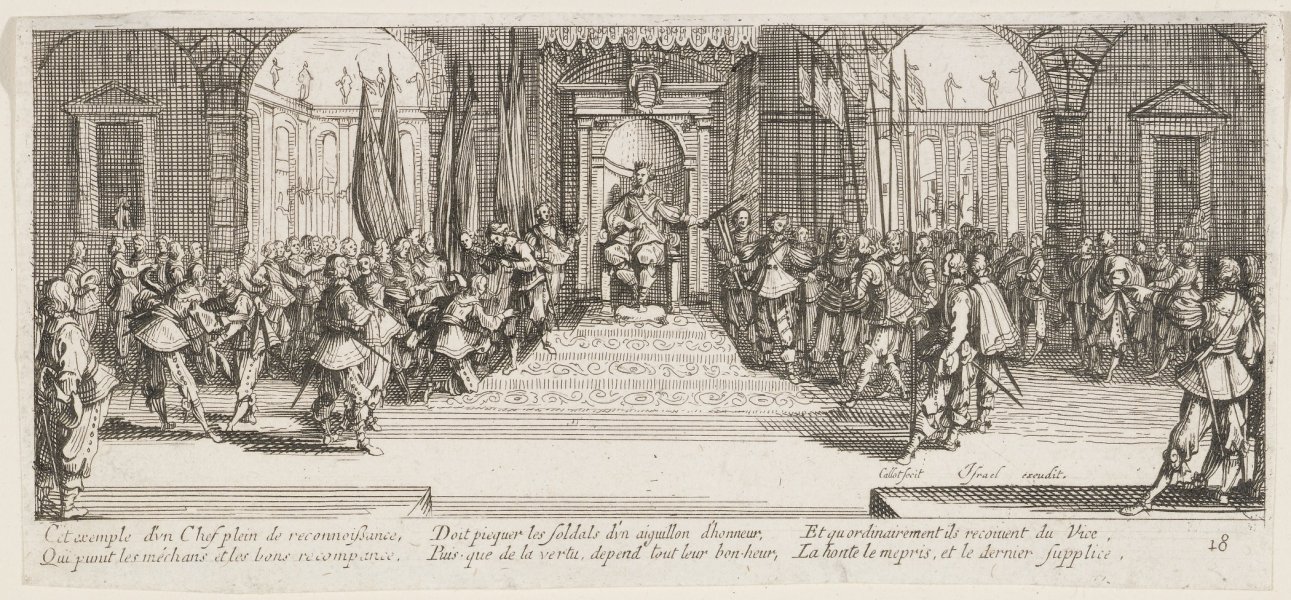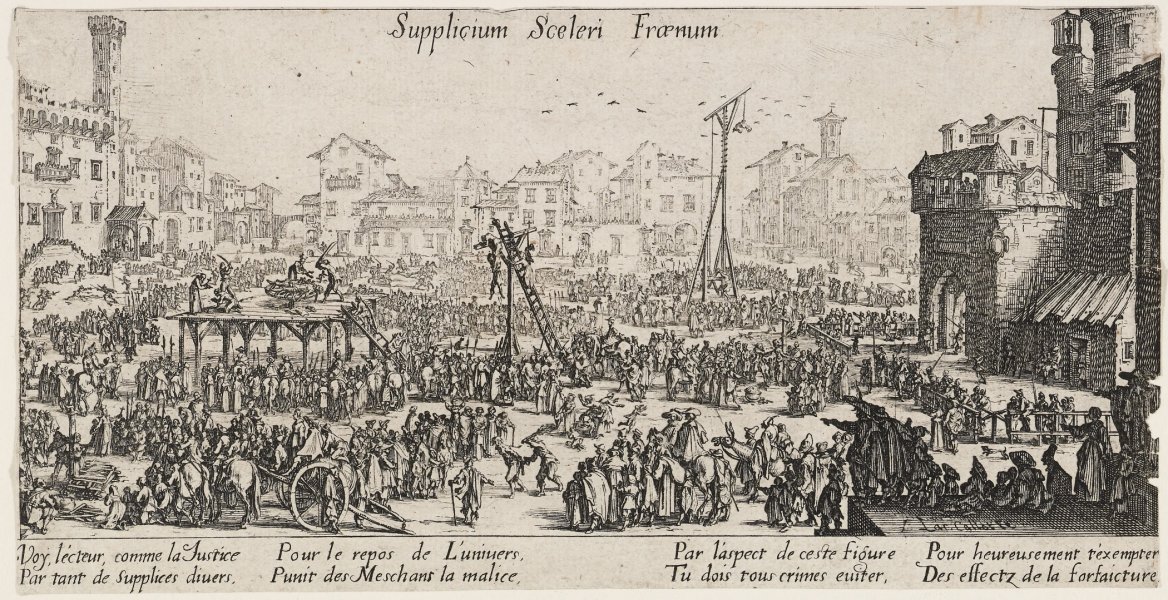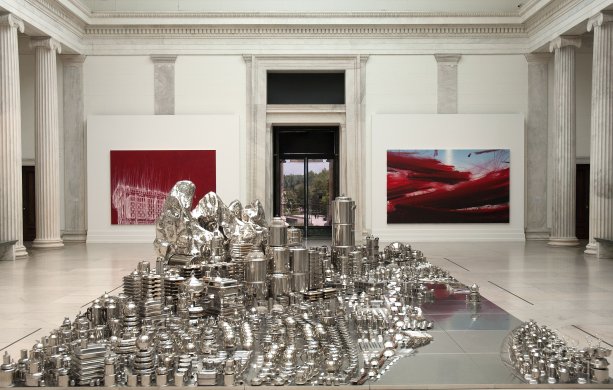Millie Chen: The Miseries & Vengeance Wallpapers
Friday, October 4, 2013–Sunday, November 16, 2014
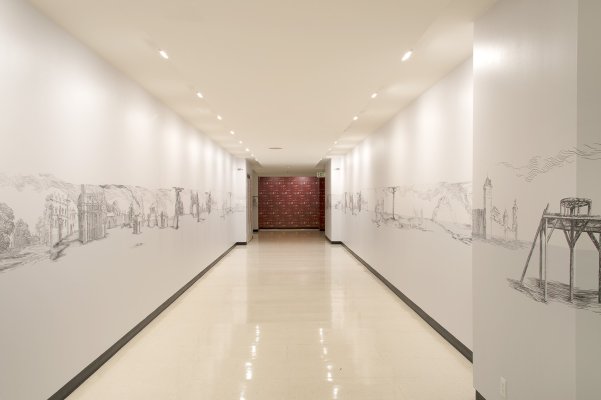
Installation view of Millie Chen: The Miseries & Vengeance Wallpapers. Photograph by Tom Loonan.
Clifton Hall Link
The first iteration of Millie Chen’s Miseries & Vengeance works debuted in the exhibition Surveyor at the Albright-Knox in 2011; it consisted of hand-drawn imagery printed and applied directly on the walls of two adjacent galleries. The Miseries & Vengeance Wallpapers reproduced the imagery used for the original work as wallpaper, printed from high-resolution digital photography by Biff Henrich / IMG_INK. The Miseries & Vengeance Wallpapers was proposed for acquisition and acquired for the museum’s collection in March 2013.
This exhibition was facilitated by Curatorial Assistant Laura Brill.
What is the capacity of aesthetics to convey atrocity?
In the Miseries & Vengeance Wallpapers, what initially appeared to be decorative walls were ultimately revealed to be a provocative dialogue between two sets of images. The exquisitely horrific imagery was culled from a set of historic prints from the Albright-Knox Art Gallery’s collection. In the seventeenth century, Jacques Callot (French, 1592–1635) produced the epic suite of etchings The Miseries and Misfortunes of War that documented the Thirty Years’ War. An early recorder of the atrocities of war and social injustice, Callot influenced the likes of Francisco de Goya (Spanish, 1746–1828), a fellow observer of human folly and cruelty.
The Miseries & Vengeance Wallpapers improvised on the thematic rubrics established by Callot for his suite of etchings. On the Miseries wallpaper, agonized bodies have been extracted from Callot’s prints and assembled to form a disturbingly decorative pattern. On the Vengeance wallpaper, the landscapes from Callot’s etchings have been entirely emptied of bodies and presented as vacated/evacuated terrain, leaving only land and built structures like buildings and torture devices. Callot grouped his scenes into two categories, namely “Miseries and Misfortunes,” which details the perpetration of the atrocities, and “Vengeance or Justice?” which strikes the simultaneously zealous and ambivalent tone of retribution where the line between perpetration and vengeance is often blurred. Key elements extracted from the original prints are repurposed on the wallpapers; these act not only as indicators of Callot’s vision but also serve as links to contemporary territories of conflict that rage on, four centuries later.
The term “landscape” inherently suggests aestheticization. What happens on that land quickly becomes invisible. Despite the violent, scarring impact of humans on the earth, the history of atrocities can easily become absorbed, literally, back into the landscape. It is only through the insistence of memory and the retelling of past events that we can keep alive the brutal facts, even as acts of atrocity continue to be perpetrated in the present.
– Millie Chen, 2013
Millie Chen is a professor in the Department of Visual Studies and associate dean in the College of Arts and Sciences at the University at Buffalo. She has shown her work across North America, South America, Europe, and Asia.
